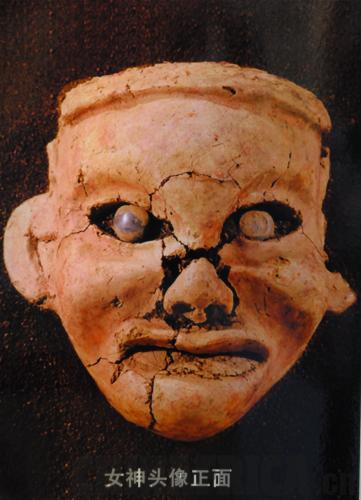|
 |
|
MATRIARCH: China's first Goddess statue relics (FRANCISCO LITTLE) |
For years iron ore was mined from the Niuheliang area, several kilometers from Chaoyang City in northeast China's Liaoning Province. The high-grade iron ore from the mine has made Lingyuan Iron and Steel Group Co. one of the strongest local enterprises. But now it has been forced to look elsewhere for its source of ore. Niuheliang, a rural area in southwest Chaoyang, is the focus of a campaign to restore the environment and share its magnificent culture with the world.
Niuheliang is one of the main sites of the Hongshan Culture, a Neolithic culture from northeast China, covering an area from the Wuerjimulun River valley of Chifeng, Inner Mongolia Autonomous Region in the north to Chaoyang, Lingyuan and the northern part of Hebei Province in the south, and extends eastward to cover Tongliao in Inner Mongolia and Jinzhou cities in Liaoning. Dating back nearly 6,000 years, Hongshan Culture is one of the earliest and most advanced civilizations discovered to date in China, featured by the Goddess statue, stone-pile tombs and colored potteries.
According to Su Bingqi, a famous Chinese archeologist, the discovery of Hongshan cultural relics has helped trace the Chinese civilization 1,000 years earlier, making Liaohe River, where the culture originated, a cradle of Chinese civilization (the others are the Yellow River and Yangtze River).
Protection of cultural heritage
In 2002, 21 years after the discovery of the Hongshan relics, a big decision was made: to apply for the World Cultural Heritage status for the Hongshan Culture. Instead of high-profile promotion, the government started from the most basic but important aspect - improving the ecological environment. The iron ore mine, located in a 58 square km protected area where cultural relics are densely distributed, was immediately shut down. The closing of the mine caused huge financial losses, but has restored the environment and protected the treasures.
Meng Zhaoguang, former chief of the Bureau of Culture in Chaoyang City, was a member of the steering committee at that time. According to him, the core value of cultural heritage is far more than the culture itself. "We should not only discover the value of cultural relics. The environment that coexisted with the culture should be protected as well," he told ChinAfrica.
With this belief, the government has invested a total of 300 million yuan ($46 million) in environmental improvement. By 2005, all five enterprises and 72 households in the protected area had been relocated. In 2008, environmental improvement was completed and two projects were officially embarked on: application for the World Cultural Heritage status and construction of the Niuheliang National Relics Park, which is expected to open to the public in 2012.
Protecting the relics is a full-time job. For Lu Zhenguo, a staff member from the Administrative Office of Niuheliang Cultural Relics, cultural security has become his daily routine. "We patrol the relics area everyday," Lu told ChinAfrica, a massive task considering the 58 square km spread.
"The provincial government has attached great importance and invested large sums of money on cultural protection, and it has produced great effects," said Meng. And it is not just for Niuheliang. According to Meng, other cultural sites have also been well protected. Last year, the government allocated 50 million yuan ($7.7 million) for the renovation of Liao Dynasty (916-1125) pagodas across the whole province.
With government support, the Niuheliang National Relics Park will soon open to the public. There are more than 30 heritage sites, of which 16 will be exhibited. According to Meng, only a few of them will be shown with the real relics, like Site 1, where China's first Goddess statue was unearthed. Other sites will remain buried with only models as exhibited.
Meng explained this is out of security concerns. "Our technology is not advanced enough to protect all the relics. It's better to leave them for the future generations," he said.
|